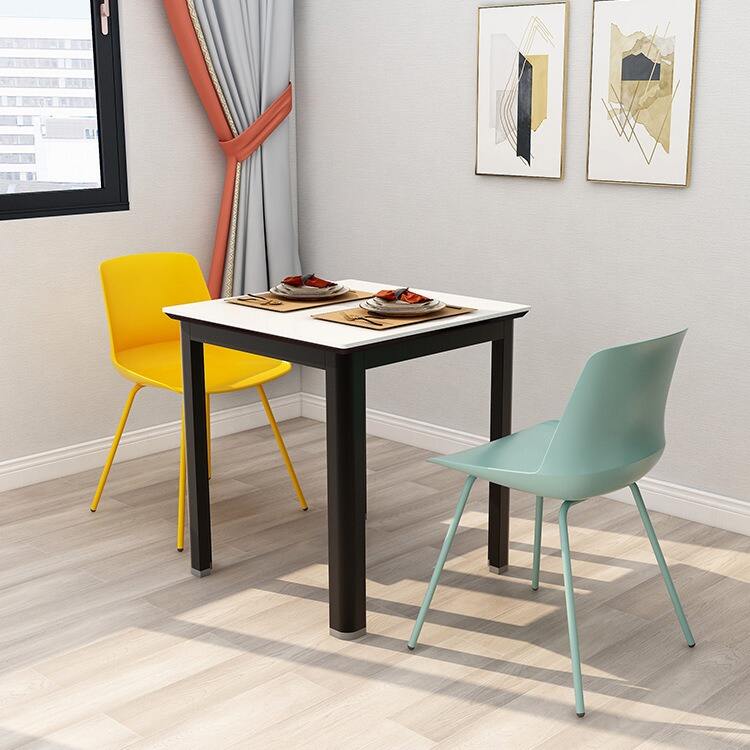Creating Ambiance Through Thoughtful Furniture Selection
The dining room serves as more than just a place to share meals - it's where lasting memories are crafted, conversations flow freely, and bonds strengthen over delicious food and warm company. The dining room furniture you select plays a pivotal role in setting the atmosphere and shaping these experiences. From intimate family dinners to festive gatherings, your choice of furniture elements directly influences how people feel and interact in the space.
Understanding the psychology behind furniture selection can transform your dining area from a simple eating space into an inviting sanctuary that encourages connection and comfort. The right combination of pieces can create an atmosphere that aligns perfectly with your lifestyle and desired ambiance.
The Foundation of Dining Room Design
Table Shapes and Their Impact
At the heart of every dining space lies the table - the centerpiece that anchors the entire room. Round tables promote equality and easy conversation, making them perfect for intimate gatherings and smaller spaces. Their soft edges create a welcoming atmosphere that encourages interaction between all guests. Rectangle tables, traditionally the most common choice in dining room furniture, offer clear sight lines and a formal arrangement that works well for larger gatherings.
The material of your dining table also speaks volumes about the room's character. Rich wooden tables exude warmth and tradition, while glass-topped tables bring contemporary elegance and visual lightness. Metal and industrial-style tables can add an urban edge, perfect for modern dining spaces.
Seating Solutions That Set the Tone
Chairs are more than just functional pieces - they're crucial elements that contribute to both comfort and style. High-backed chairs create a sense of formality and grandeur, while low-profile seating offers a more casual, relaxed vibe. The introduction of upholstered dining chairs can soften the room's acoustics while adding layers of texture and color to your dining room furniture arrangement.
Consider mixing chair styles for an eclectic yet cohesive look. Pairing a bench along one side of the table with individual chairs creates an interesting dynamic and can accommodate varying numbers of guests with ease. The key is finding the right balance between comfort and aesthetic appeal.
Color Psychology in Dining Spaces
Warm vs. Cool Tones
The color palette of your dining room furniture significantly influences the dining experience. Warm woods and rich earth tones stimulate appetite and create a cozy, intimate atmosphere. These colors work particularly well in spaces meant for family gatherings and comfort dining. Cool tones like grays and whites, on the other hand, can create a sophisticated, modern ambiance perfect for formal entertaining.
Consider how different wood finishes affect the room's mood. Dark mahogany or walnut pieces tend to feel more formal and traditional, while lighter oak or pine furniture creates a more casual, contemporary atmosphere. The finish of your dining room furniture can either anchor the space or help it feel more open and airy.
Accent Colors and Their Effects
Strategic use of color through furniture upholstery, chair cushions, or painted pieces can dramatically alter the room's energy. Red accents can stimulate conversation and appetite, making them excellent choices for social dining spaces. Blue tones promote calmness and can help create a more relaxed dining atmosphere, while green hues bring a natural, refreshing element to the space.
Don't be afraid to incorporate multiple colors through your dining room furniture selection, but maintain a cohesive theme to avoid visual chaos. Consider using a color wheel to select complementary or analogous colors that work harmoniously together.
Scale and Proportion Considerations
Spatial Balance in Furniture Arrangement
The size and scale of your dining room furniture must be carefully considered to create a balanced, functional space. A too-large table can overwhelm a small room, while undersized furniture can make a spacious room feel empty and uninviting. The general rule is to leave at least 36 inches of clearance around the table for comfortable movement and seating.
Consider the visual weight of different pieces and how they work together. A substantial table might pair well with lighter, more delicate chairs to maintain balance. Similarly, a glass table could be complemented by more substantial seating to create visual interest and stability.
Storage Solutions and Additional Pieces
Supporting furniture pieces like sideboards, buffets, and china cabinets contribute significantly to the room's functionality and mood. These pieces of dining room furniture should complement the main dining set while providing necessary storage and display space. Their placement can help define the room's boundaries and create natural flow patterns.
When selecting additional furniture, consider both practical needs and aesthetic impact. A beautiful hutch can serve as a focal point while storing dinnerware, while a strategically placed serving cart can add convenience without cluttering the space.
Lighting Integration with Furniture
Natural Light Interaction
The relationship between your dining room furniture and natural light sources can dramatically affect the room's atmosphere. Reflective surfaces like glass or polished wood can help bounce light around the room, making it feel more spacious and airy. Consider how different finishes appear under varying light conditions throughout the day.
Position your dining set to take advantage of natural light while avoiding glare during peak dining hours. Light-colored furniture can help brighten a dim room, while darker pieces can add drama and sophistication to a well-lit space.
Artificial Lighting Coordination
Your choice of dining room furniture should work in harmony with your lighting fixtures. A grand chandelier over a modest table might feel disproportionate, while inadequate lighting can diminish the impact of beautiful furniture. Consider how different materials and finishes look under various lighting conditions.
Layer your lighting to create different moods for various occasions. A combination of ambient, task, and accent lighting can highlight your furniture's best features while creating the desired atmosphere for any dining experience.
Frequently Asked Questions
What size dining table should I choose for my space?
The ideal table size depends on your room dimensions and typical dining needs. Allow 24 inches of table width per person and maintain at least 36 inches of clearance around the table. For optimal comfort and flexibility, choose a table that allows for comfortable seating while leaving enough room for movement around the dining space.
How can I mix different styles of dining room furniture successfully?
To successfully mix furniture styles, maintain a common element across pieces - this could be color, material, or scale. Focus on creating balance rather than perfect matching. For example, pair a modern table with traditional chairs in complementary finishes, or mix chair styles while keeping the upholstery consistent.
What materials are best for high-traffic dining rooms?
For high-traffic dining areas, look for durable materials like solid wood, metal, or high-quality veneers with protective finishes. Consider stain-resistant fabrics for upholstered pieces, and opt for surfaces that are easy to clean and maintain. Quality dining room furniture in resilient materials will maintain its appearance and functionality despite regular use.


